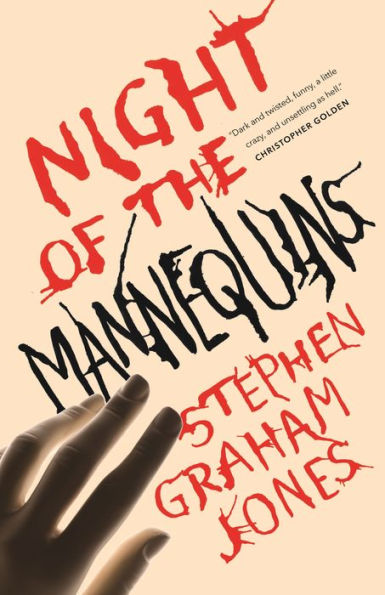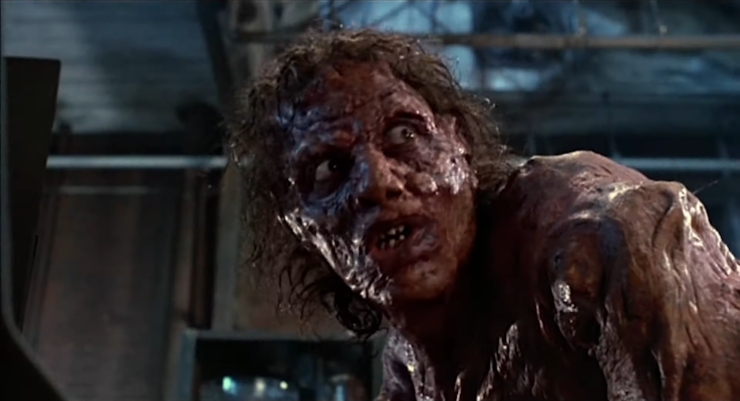Now the hand of Henry Jekyll…was professional in shape and size: it was large, firm, white, and comely. But the hand which I now saw, clearly enough…was lean, corded, knuckly, of a dusky pallor and thickly shaded with a swart growth of hair. It was the hand of Edward Hyde.
In Robert Louis Stevenson’s classic 1886 science-fiction novel Dr. Jekyll and Mr. Hyde, the estimable Dr. Jekyll’s hand is white. But the hand of his evil alter-ego, Mr. Hyde, is “of a dusky pallor.” Jekyll creates a potion that turns him from an upstanding citizen into someone “wholly evil.” And for Stevenson, someone who was wholly evil had also to be non-white.
Many critics have pointed out that Hyde, and therefore iniquity, are racialized in Stevenson’s book. Pop culture creators have noticed as well, often riffing on the original story through racial reversal. In Matt Ruff’s Lovecraft Country (2016), a Black woman familiar with the “dusky” passage in Jekyll and Hyde takes a potion which turns her white. And in the third season of the television series Penny Dreadful, Jekyll is a South Asian man who eventually inherits the noble title of Hyde, effectively Anglicizing him.
Stevenson also has less self-conscious analogs, though. Robin R. Means Coleman in Horror Noire has pointed out how movies like King Kong (1933) and Creature from the Black Lagoon (1954) code their titular antagonists as Black sexualized primitives. Blackness is linked with monstrosity and wrongness, just as white observers all note about Mr. Hyde that “[t]here is something wrong with his appearance, something displeasing, something downright detestable.”
Buy the Book


Night of the Mannequins
While Kong may be Hyde’s cousin, he also has more direct heirs. Lovecraft’s 1931 novella The Shadow Over Innsmouth is one example. It tells the story of a man who discovers he is related to ancient fish-people, and leaves his whiteness behind to sink into the (in Lovecraft’s view) degenerate deep. Or there’s Ken Russell’s 1980 film Altered States, in which William Hurt seeks out the wisdom of indigenous people and uses their techniques to turn himself into a ravenous, sheep-eating Neanderthal/monkey.
In contrast to the straightforward antipathy of monster movies, Jekyll and Hyde stories evoke a more intimate hatred and desire. They don’t just involve love of wickedness, but also love of a racialized and racist vision of the primitive—a yearning to cast off uptight (white) norms and repression and bathe in (stereotypically) rawer, more primeval power, coupled with a fear of losing oneself in that same sensual authenticity. “I knew myself, at the first breath of this new life, to be more wicked, tenfold more wicked, sold a slave to my original evil; and the thought, in that moment, braced and delighted me like wine,” says Jekyll.
One of the most famous latter-day Jekyll/Hyde variations is David Cronenberg’s 1986 body horror film The Fly. The Jekyll character here is scientist Seth Brundle, played with geeky charm by Jeff Goldblum. Brundle is trying to develop human teleportation technology. In his first human test on himself, a fly gets into the telepod, and the disintegration and reintegration splices Brundle and fly together to create a genetic/molecular hybrid: Brundlefly. At first, Seth looks and feels fine, but soon his fingernails and teeth are falling out, and he’s climbing walls and spitting out acid to dissolve his food.
In becoming more fly-like, Seth also becomes more in touch with “the flesh”—the visceral reality of need and thrust and hunger. He becomes so strong he snaps a man’s wrist in an arm-wrestling contest; he consumes pounds of sugar and donuts; his insatiable sex drive wears out reporter girlfriend Veronica (Geena Davis). Brundle feels, in the words of Jekyll,
“younger, lighter, happier in body; within I was conscious of a heady recklessness, a current of disordered sensual images running like a millrace in my fancy, a solution of the bonds of obligation, an unknown but not an innocent freedom.”
That new freedom is linked to a kind of primal authenticity; a dirty, exhilarating, pseudo-mystic retro-realness. In the film, Seth boasts to Veronica about his newfound cthonic knowledge, and taunts her civilized reservations.
You’re afraid to dive into the plasma pool, aren’t you? You’re afraid to be destroyed and recreated, aren’t you? I’ll bet you think that you woke me up about the flesh, don’t you? But you only know society’s straight line about the flesh. You can’t penetrate beyond society’s sick, gray, fear of the flesh. Drink deep, or taste not, the plasma spring! Y’see what I’m saying? And I’m not just talking about sex and penetration. I’m talking about penetration beyond the veil of the flesh! A deep penetrating dive into the plasma pool!
There are virtually no non-white actors in The Fly, and Seth’s degeneration doesn’t have the explicit racial markers used in Dr. Jekyll and Mr. Hyde or in The Shadow Over Innsmouth. But the racist context of the Jekyll/Hyde story, and of monstrous representations in general, drip and ooze around the edges of the narrative. Seth lifts a woman he’s picked up at a bar and carries her up the stairs in a sequence that iconographically references the famous monster-carrying-leading-lady scene from Creature from the Black Lagoon. He also climbs headfirst down a wall, evoking one of the most famous passages in Bram Stoker’s Dracula—a novel about the invasion of a non-white, possible Semitic foreigner who spreads contagion and disease.
Seth himself in the early stages of his transformation looks less fly-like than ape-like—his face bloated, his shoulders hunched, squatting and loping like the baboon who served as the transporter’s first test subject. In one of the film’s most chilling monologues, Seth talks about the brutality and cruelty of insects. “Insects…don’t have politics. They’re very brutal. No compassion, no compromise. We can’t trust the insect,” he tells Veronica. He’s talking about the alien and the subhuman. But he could also be Kurtz or some other colonialist talking about supposedly savage civilizations that cannot be bargained with. To say that monster over there has no politics is a way to say that they should be subjected to the antipolitics of war and genocide.
Seth doesn’t want to kill anyone. Unlike Jekyll, he’s not interested in exploring his own capacity for violence and hate, at least at the beginning of the film. On the contrary, he specifically wants to escape the fleshy, atavistic past, and allow humans to cut themselves free of time, moving from space to space instantaneously without crossing the intervening seconds. He wants to “change the world,” teleporting into a new future free of the detritus of the past.
But as he works on his invention, Seth realizes that he can’t reintegrate the new without understanding the old. Until he is intimate with the old flesh, he can’t create the “new flesh,” to use the term from Cronenberg’s earlier film Videodrome. The forward-thinking cinema of body horror and monsters whose teeth fall out is still built of the old, toothy horror from the past, with its hoary colonialist and racist presuppositions. Seth beams himself out of space and time—but some evil buzzing thing comes with him, brushing his shoulder like the dusky hand of Hyde.
Noah Berlatsky is the author of Wonder Woman: Bondage and Feminism in the Marston/Peter Comics (Rutgers University Press).










